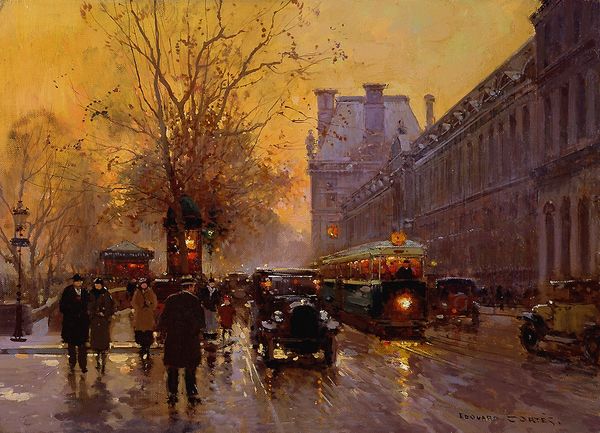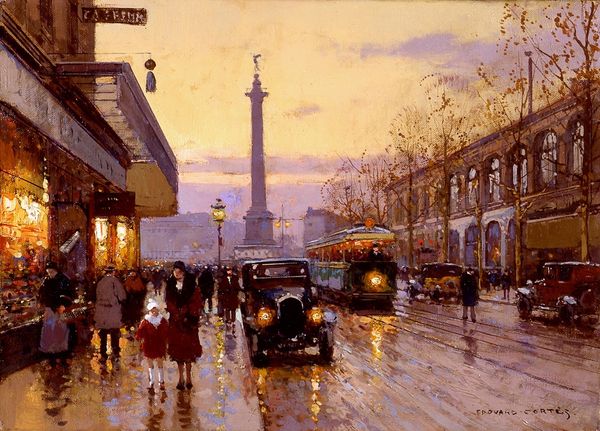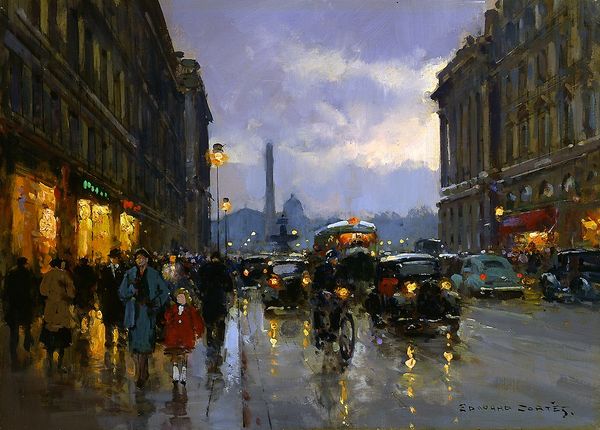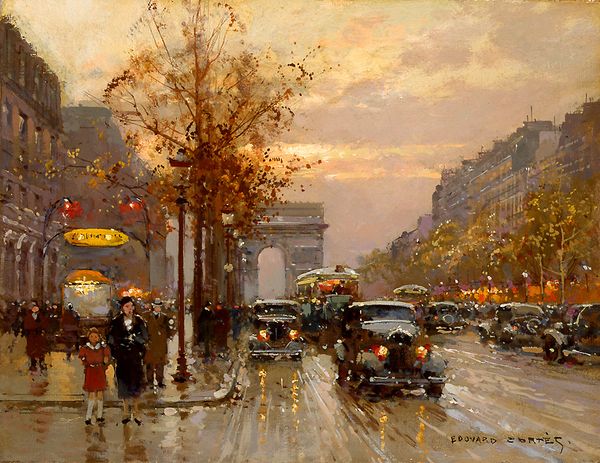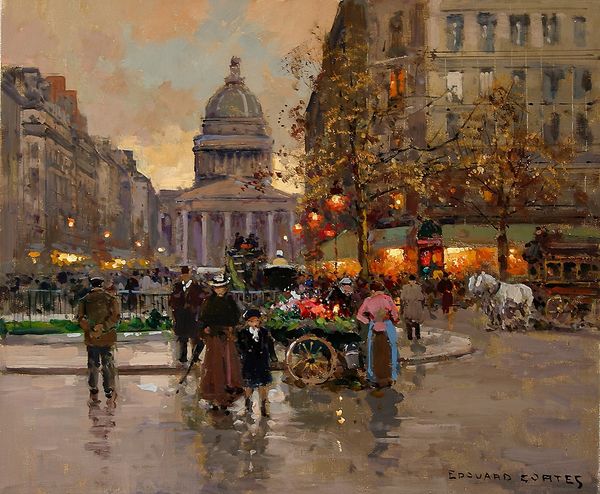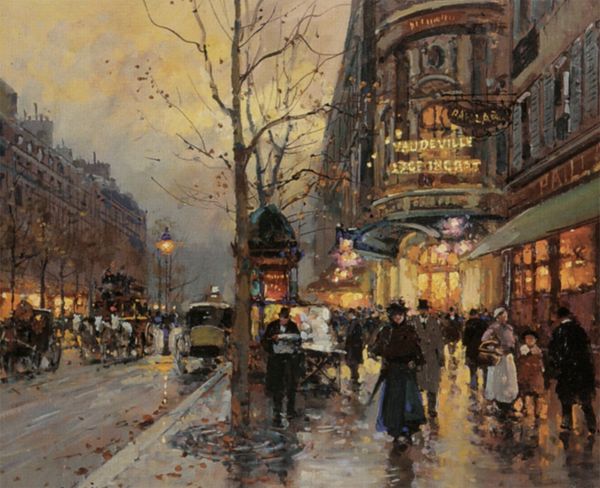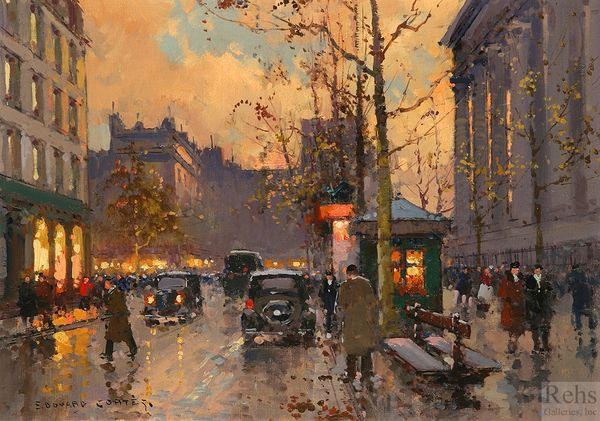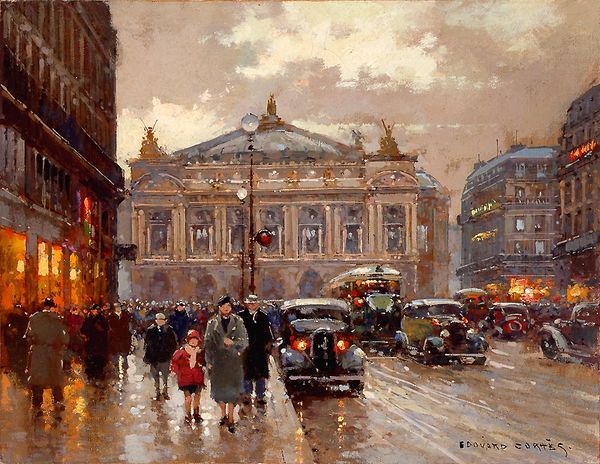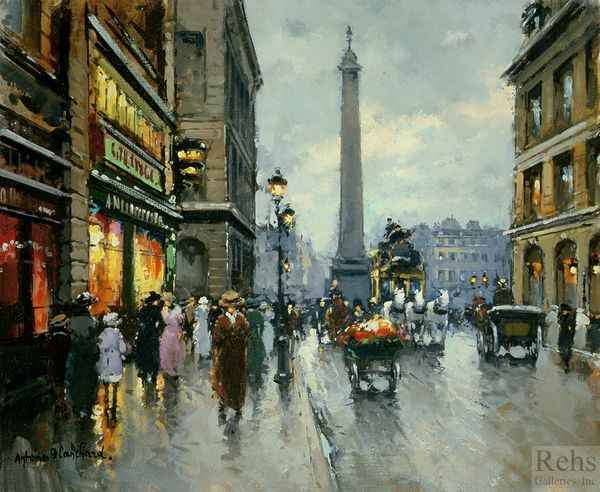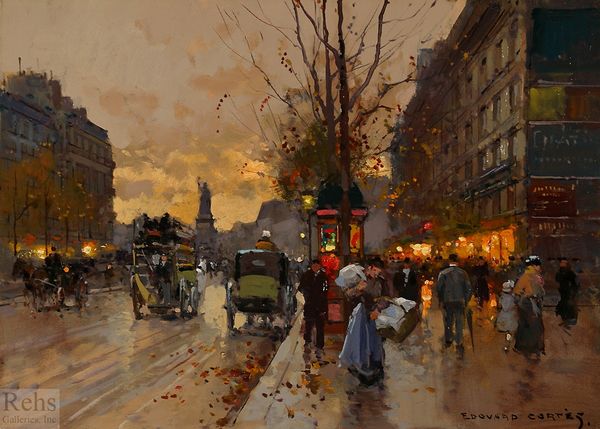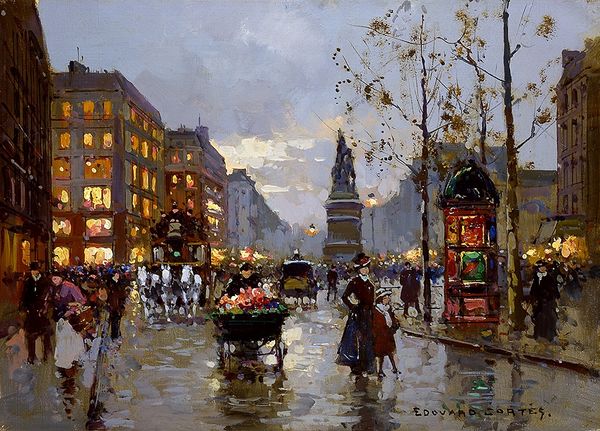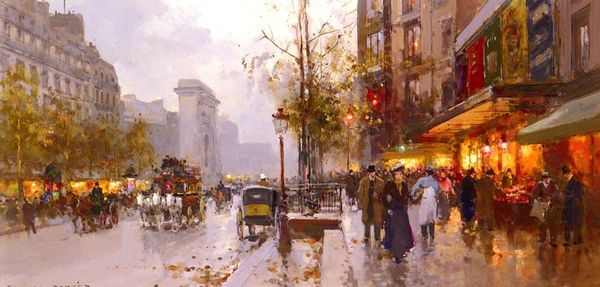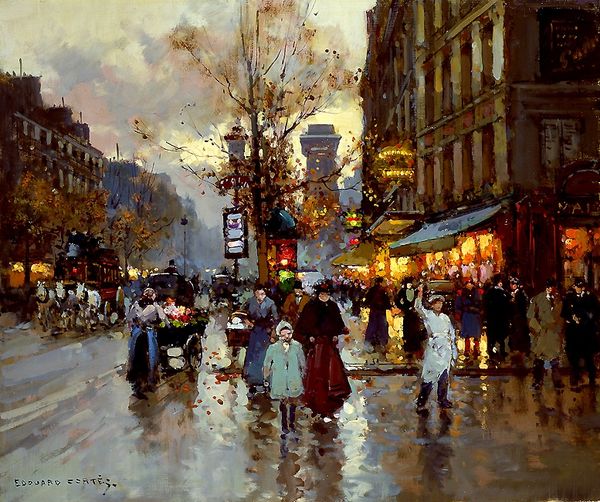
painting, oil-paint
#
urban landscape
#
painting
#
impressionism
#
street view
#
oil-paint
#
landscape
#
urban cityscape
#
street-photography
#
orientalism
#
square
#
cityscape
#
genre-painting
Copyright: Edouard Cortes,Fair Use
Curator: Let’s turn our attention to “Rue Dulm Pantheon,” an oil painting that captures a bustling Parisian street scene, attributed to Edouard Cortes. Editor: It’s really luminous, isn't it? The golden light reflecting off the wet cobblestones creates a wonderful sense of depth and atmosphere. There's almost an Old Master quality in that light, despite the obviously modern subject. Curator: Absolutely. Cortes was known for these urban landscapes, depicting the everyday life of Paris. He skillfully captured the city's architectural beauty, but also the social milieu. Look at how the people are dressed, the early motorcars. It speaks to a specific moment in time. Editor: Notice how he balances the grand architectural statement of the Pantheon with these intimate groups of people, all caught in transit, and framed at this near distance. It makes it so lively and personal, the way he's rendered this public street. But tell me, does that central placement of the Pantheon monumentalize civic power, or simply function as an urban backdrop? Curator: It’s a fascinating question. The Pantheon, initially a church and later a mausoleum for prominent French citizens, looms large, suggesting the enduring presence of French history and national identity within this rapidly modernizing city. But it’s really more than just a backdrop, since Cortes’ paintings appealed to bourgeois sensibilities, and provided idealized imagery of Parisian life during the Belle Epoque. Editor: Yes, I think I agree. The composition’s structured rhythm – the buildings, the streetlamps – also serves that idealized sense. What is so remarkable to me is how he's used visible brushstrokes to give a feeling of constant movement, almost vibrating. It contrasts perfectly with the rigid structure. Curator: That vibrancy underscores the changes the city was undergoing, and how urban environments can also suggest alienation amid progress, especially for many lower class workers and migrants relegated to the margins of this growing capitol. The focus of his paintings reflected not so much these communities but a rising urban elite with increasing cultural and political power. Editor: Very interesting how even a seemingly straightforward scene, meticulously created with those painterly gestures, could become a signifier for broader social dynamics. Thanks to your insights, my perspective is more comprehensive. Curator: It’s a shared journey of discovery, always! Each artistic choice illuminates another aspect of the culture it reflects.
Comments
No comments
Be the first to comment and join the conversation on the ultimate creative platform.
